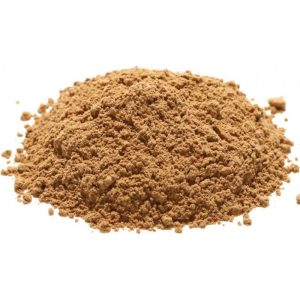Organic Goldenrod:
Place of Origin: Poland- Organic
Botanical Name
Form
- Anticatarrhal -Substance that reduces the formation of catarrh or phlegm (pathologic mucus)
- Anti inflammatory – Substance that reduces inflammation
- Antiseptic- Substance that inhibits growth of microorganisms
- Diaphoretic-Substance that promotes sweating and thereby controls fever
- Carmative -Substance that relieves flatulence and soothes intestinal spasm and pain usually by relaxing the intestinal muscle and sphincters.
- Diuretic-Substance that increases urinary input.
Herbal Indications of use;
- Upper respiratory tract catarrh or inflammation mainly with chronic nature (influenza)
- Rheumatoid arthritis and osteoarthritis
- Promoting diuresis
- Inflammation and infection of the urinary tract
- Prophylaxis and treatment of kidney and bladder stones.
Goldenrod (Solidago canadenis, S. odora, S. vigaurea, and many others) is part of the Asteraceae (Daisy) family. The pollen is sticky and heavy so it doesn’t float into the air and insects pollinate the plant instead of wind. The properties of goldenrod are similar to many other herbs: antifungal, diuretic, diaphoretic, anti-inflammatory, expectorant, astringent, antiseptic, and carminative. However, the actions of goldenrod to the kidneys, urinary track, skin, allergies, and cardiovascular system are impressive.
The aerial part of the plant is used and is harvested late summer into early fall before the flowers are in full bloom. There are many varieties of goldenrod and although I have not heard or experienced any adverse effects, it’s best to research the plant when in doubt.
Goldenrod has a history for use with the bladder and urinary system. The astringent and antiseptic qualities tighten and tone the urinary system and bladder making it useful for UTI infections. It is a kidney tropho-restorative (tropho is Greek for nourishing), so it both nourishes and restores balance to the kidneys.
The Latin name solidago means to make whole. The flowers and the leaves can be infused with oil or used as a poultice for wounds and burns. The infused oil combines well with plantain, yarrow, and St. John’s wort for a nice wound healing skin salve. It also makes a nice rub for tired achy muscles and arthritis pain.
Its astringent property calms runny eyes, runny nose, and sneezing that comes with late summer and early fall allergies. I have used goldenrod tincture successfully for my ragweed allergies for two years.
Its antiseptic and antimicrobial properties make this a good choice for sore throats. As an expectorant, goldenrod can expel mucous easily from the lungs. Try it infused with honey or as a tea with honey added. The diaphoretic property of goldenrod helps to open pores of the skin to release sweat during a fever.
As an antifungal, goldenrod contains saponins and is a useful alternative for Candida type yeast infections.
- The flowers are edible .




Reviews
There are no reviews yet.